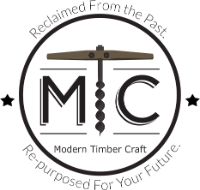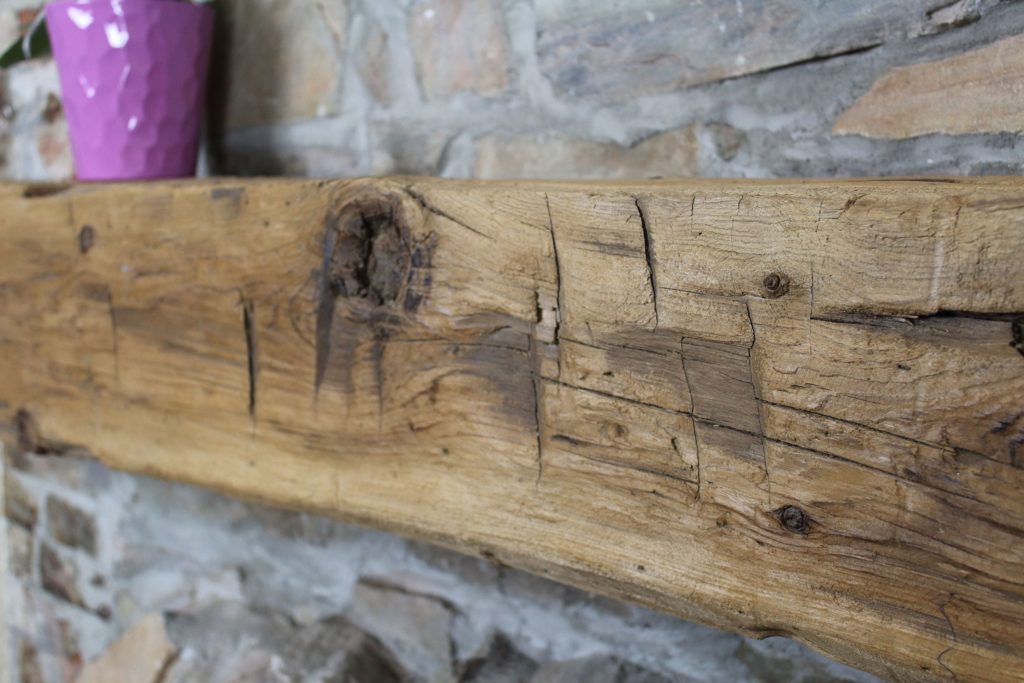
A hand hewn wooden beam is a log that’s been cut down and carved with handheld tools. Essentially, hand hewn beams are long pieces of timber that have been changed from round to square in shape. When sawn to the proper length, such timbers can be used not just as beams, but roof trusses and joints as well.
In days gone by, hand-held tools weren’t just the best way to shape logs into beams; they were the only way. The earliest patent for a hewing machine dates to the beginning of the 19th century. During the Industrial Revolution, rough sawn beams became widely available. However, builders and craftsmen continue the hand hewn tradition to this day. Why do so many prefer hand hewn timbers over those cut by machines?
Apart from the fact that hand hewn beams lend a fantastic natural and rustic look to any room, they’ve never gone out of fashion. Their elegance, beauty, durability, and history offer a different look than timbers that have been cut with electric tools.
Most of the hand hewn beams for sale today are antique, which means they’re more than a century old. Many of these beams have been salvaged from old buildings and have been reused several times. Though hand hewn wood has been used in home building for hundreds of years, it’s still desirable for its aesthetic qualities and structural integrity.
In this guide, you’ll learn more about the history and benefits of hand-hewn beams and you’ll also learn how to spot them when buying reclaimed wood for your next project.
Ceiling Beams: A Basic History
Overhead beams are a crucial component of timber-frame buildings. While their aesthetic appeal is undeniable, their original purpose was strictly functional: they supported the enormous weight of roofs and upper floors. Sticks and logs, the progenitors of ceiling beams, were laid over the tops of crude stone walls.
When stronger and more advanced tools were invented, craftsmen found themselves able to carve larger, longer beams from bigger trees. Exposed beams became the structural norm, appearing in castles, cottages, and other buildings throughout the Middle East, the Orient, and Europe. As construction technology and architecture evolved and mass production of lumber became possible, these massive beams were slowly replaced by smaller pieces used to frame joists and rafters.
From the early 1950s through the 1980s, large beams were hidden behind low dropped ceilings to reduce cooling and heating bills. However, post-and-beam or timber-frame assembly is still popular, appearing in many mountain homes, large barns, ski resorts, agricultural buildings, and cabins.

How to Tell if a Wooden Beam is Hand Hewn
To determine if a reclaimed wooden beam has been hewn by hand, you can evaluate its weight, pattern, straightness, and other factors. Here are a few ways to tell a hand hewn wooden beam from one that’s been cut by a mechanical saw.
- Look at the grain pattern. To tell if a beam has been hewn by hand, you’ll have to look at it in natural, full light. With this method, it’s easy to see the wood’s grain pattern, which indicates that the beam is hand hewn. It’s also a good idea to compare the beam to others that are in stock. A hand hewn beam’s markings and patterns should be different from those of other beams in the woodpile.
- Look for the marks of an adze or an ax. Adzes and axes are hand-held tools traditionally used to create ceiling beams and construction timbers. It’s easy to tell the difference between marks from hand-held tools and those from mechanical log cutters.
- Test the weight of the timber. Another way to find out if a beam is hand hewn is to lift it and evaluate its weight. A hand hewn beam should be much heavier than one cut by a machine.
- Check the timber’s edges. Looking at the edges of the beam will give you clues as to its authenticity. The sides of a hand hewn beam shouldn’t have sharp corners or edges. These beams are never perfectly straight, and they shouldn’t have right angles. If they have precise edges and tight corners, they haven’t been hewn by hand.
With these clues and our help, you’ll find the right hand hewn beam for any building project. Call us today to learn about product availability and to receive product recommendations from our hand hewn timber experts.
What’s the Difference Between Hand Hewn and Rough Sawn Beams?
Though they share quite a few similarities, hand hewn and rough sawn beams are different in some ways. Because they’re squared by hand with an axe, these beams offer a unique appearance that’s highly sought after.
The hand-hewing process requires a great deal of effort. Before sawmills were readily available, craftsmen and loggers would cut down trees, score them every four to six feet, and remove the bark between the notches. This time-consuming and arduous process gives these beams their characteristic rough appearance. Today’s hand hewn beams are typically reclaimed from homes, barns, and other 1800s-era buildings.
By comparison, rough sawn beams are cut in mills using electric tools. They’re usually pulled from warehouses and factories. These stout pieces are often used as structural components. Because they’re behind the scenes, these pieces aren’t finished at the sawmill.
Despite their differences, hand sawn and rough hewn beams make great additions to any interior design project. Hand hewn beams offer a unique visual appearance, making them an excellent choice for benches and tables. For a tabletop or countertop, rough sawn beams offer a slightly smoother and more refined look.

We Can Provide the Hand Hewn Beams to Make Your Next Project Spectacular
With their rough and rugged appearance, hand hewn timbers lend a unique, rustic appearance to any building. Whether you’re using them as structural elements or in an interior design project, they’re sure to be the focal point of the room.
If you’d like to learn more about hand hewn wood, give the experts at Timber Craft a call. Our team of specialists can help make any project a success. We guarantee that you’ll get the quality, craftsmanship, and service you deserve. Contact us today for a no-obligation consultation.

Written by Jake Park
Jake is the founder of Modern Timber Craft and is a seasoned reclaimed woodworking enthusiast with over 20 years experience.


